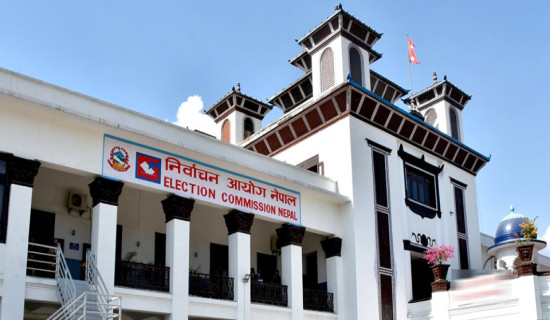- Monday, 19 January 2026
Resettle All Freed Kamaiyas
The slavery system was in practice in Nepal till 1926, when then Rana Prime Minister Chandra Shumsher abolished it for good. While liberating the slaves from the inhuman yoke of bondage, the Rana Prime Minister made arrangements for the livelihoods of the freed slaves by providing them with land and money from the treasury of the Pashupatinath temple. This was considered a great feat on the part of Chandra Shumsher.
Another milestone was achieved on July 17, 2000, when the Kamaiya (bonded labour) system was abolished in Nepal. As per the Kamaiya system, poor people were forced to work in the homes of landlords when their families could not pay debt to them. They had to work without pay. They did not get any day off except on Maghi, a festival falling on the first day of Magh. On this day, the Kamaiyas were exchanged as if they were the personal property of landlords. The majority of the Kamaiyas were from the Tharu community.
Emancipation
The abolition of the Kamaiya system resulted from the pressure of the Kamaiya liberation movement on the government to liberate the Kamaiyas. On May 26, 2000, four Kamaiyas came to Kathmandu from Kailali to exert pressure on the government to resolve the Kamaiya issue. On May 30 of the same year, over 10,000 people demonstrated in Dhangadhi to attract the attention of the government to the Kamaiya issue. The Kamaiyas and other stakeholders kept on exerting such pressure on the government. As a gesture of recognising the need for emancipating the Kamaiyas, three leaders of the CPN-UML of Kailali freed their Kamaiyas.
On July 17, 2000, a bill on the liberation of Kamaiyas was presented to the House of Representatives. The Cabinet decided to declare the Kamaiya system illegal and penalise anyone keeping Kamaiyas. And the bill was passed. After the endorsement of the bill, the government took upon itself the responsibility of rehabilitating the freed Kamaiya families. In fact, the Kamaiya system is in contravention of the universal declaration of human rights, to which Nepal is a party. Such a system is also prohibited by the Constitution of Nepal, 2015.
After the liberation of the Kamaiyas, the government promised to provide them with land for housing purposes and arrange for means for their livelihood. There were 32,509 freed Kamaiya families in Banke, Bardiya, Dang, Kailali and Kanchanpur. Managing the livelihoods of these families was a daunting task. The government formed one commission after the other to rehabilitate the freed Kamaiyas. National and local NGOs and some government line agencies tried to provide shelter for the freed Kamaiyas in temporary settlement camps.
A commission formed on January 1, 2009 took the initiative to rehabilitate the freed Kamaiyas. It classified the freed Kamaiyas into four categories. The first category included the freed Kamaiyas with no land and houses. The second category included those with no land but using government or public land. The third and fourth categories included those having a maximum of 338.6 square metres of land and over 338.6 square metres of land, respectively. The government decided to provide full rehabilitation packages for the first- and second-category freed Kamaiya families numbering 12,570 and 12,000, respectively. The total number of freed Kamaiya families to get full relief was 27,570. The third and fourth categories included 1,869 and 3,070 freed Kamaiya families, respectively. However, this process is yet to be completed.
As per the government data, out of 27,570 Kamaiya families living in the aforementioned five Terai districts, 25,195 freed Kamaiya families have got land. Other freed Kamaiyas are still living on river-banks, in landless squatters’ settlements or in forested areas. It may be noted that the government also abolished the Kamlari system on June 27, 2013. As per the Kamlari system, the daughters of Kamaiya families were compelled to work as Kamlaris (female bonded labourers) in the homes of landlords. The government disclosed the details of 9,490 freed Kamlaris. Later, 11,000 ID cards were distributed to the freed Kamlaris.
Poverty
It has been 22 years since the Kamaiyas were liberated but the rehabilitation process has remained still incomplete. The process will remain incomplete as long as the issues of the freed Kamaiyas – poverty and land possession – are not resolved. Now, the remaining task has been entrusted to the local governments by the federal government. The freed Kamaiyas do not believe that the local governments will resolve their problems. So they are demanding that the remaining task be taken over again by the federal government.
Liberating the Kamaiyas is not enough. What is important is their rehabilitation. Although a large number of freed Kamaiya families have been rehabilitated, the remaining families need also to be rehabilitated at the earliest. Twenty-two years is not a small deal. As such, there are reports that some freed Kamaiayas have gone back to their old masters to work as bonded labourers, although it is illegal and punishable by law now. It is high time the government rehabilitated the remaining freed Kamaiyas at the earliest. It behoves the government to provide them with livelihood means until they are self-reliant. The government should also take care of education for the children of the freed Kamaiyas. Fully rehabilitating all the freed Kamaiyas will enhance the public trust in the government.
(Maharjan has been regularly writing on contemporary issues for this daily since 2000. uttam.maharjan1964@gmail.com)












-original-thumb.jpg)




